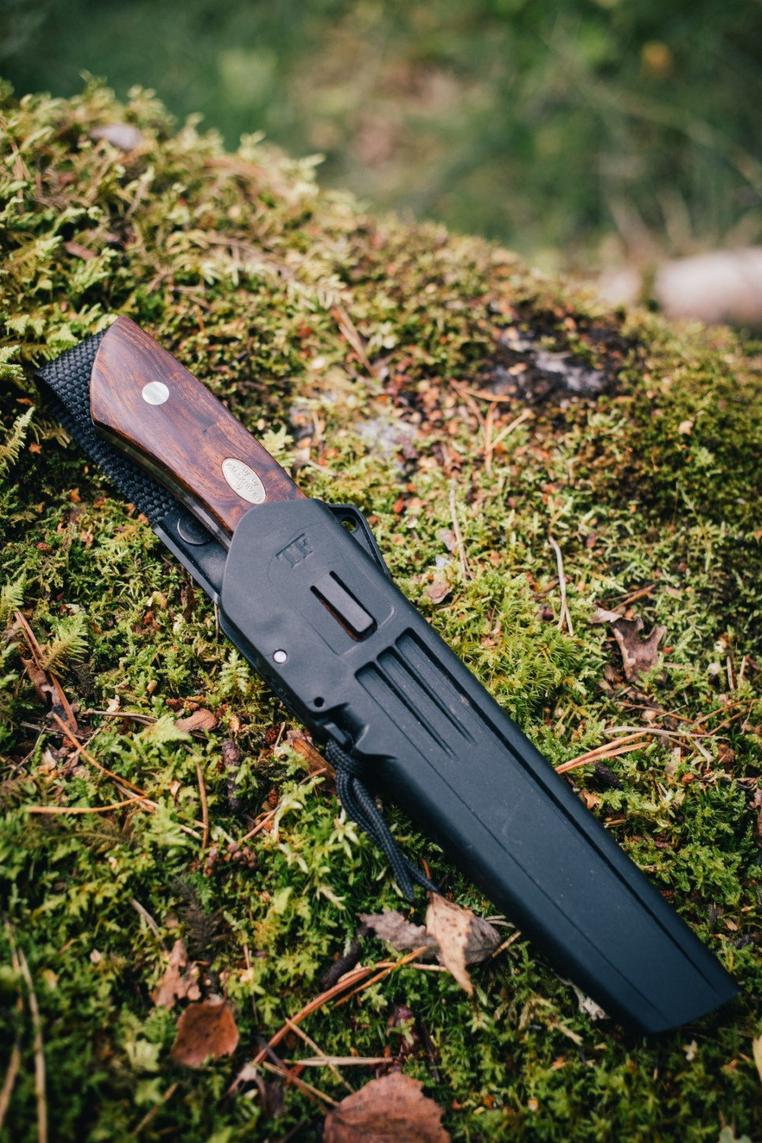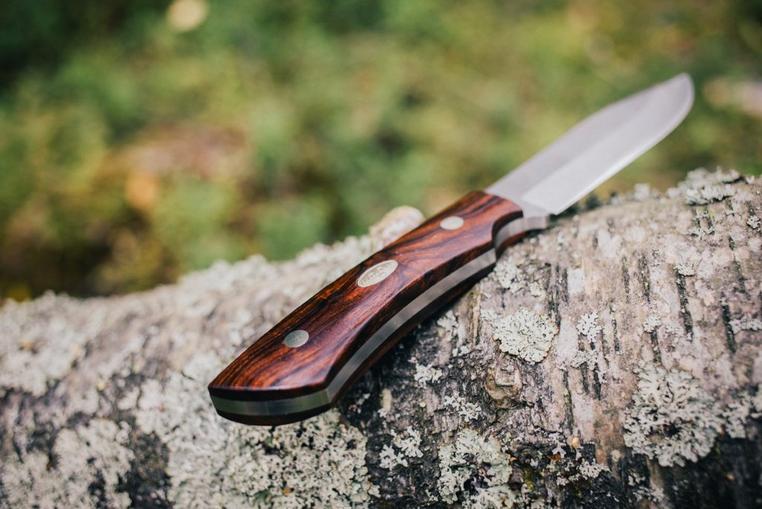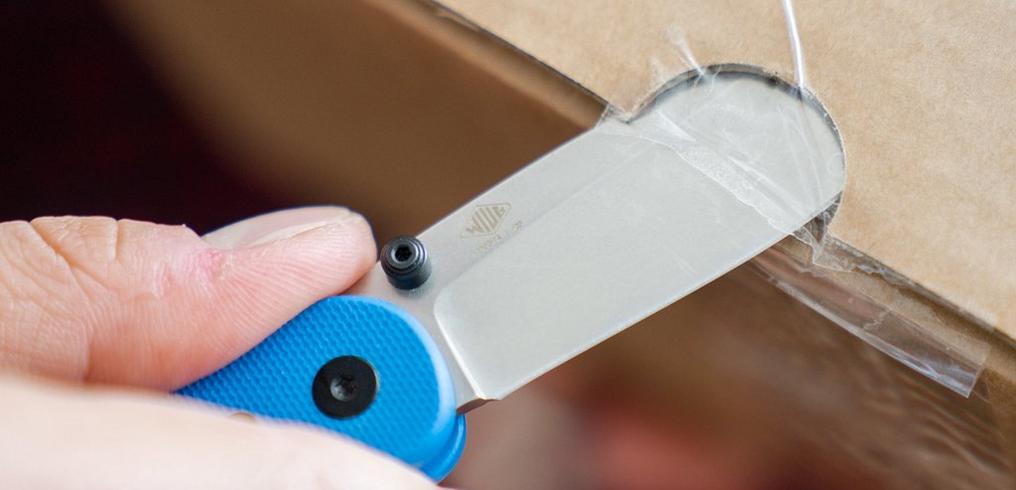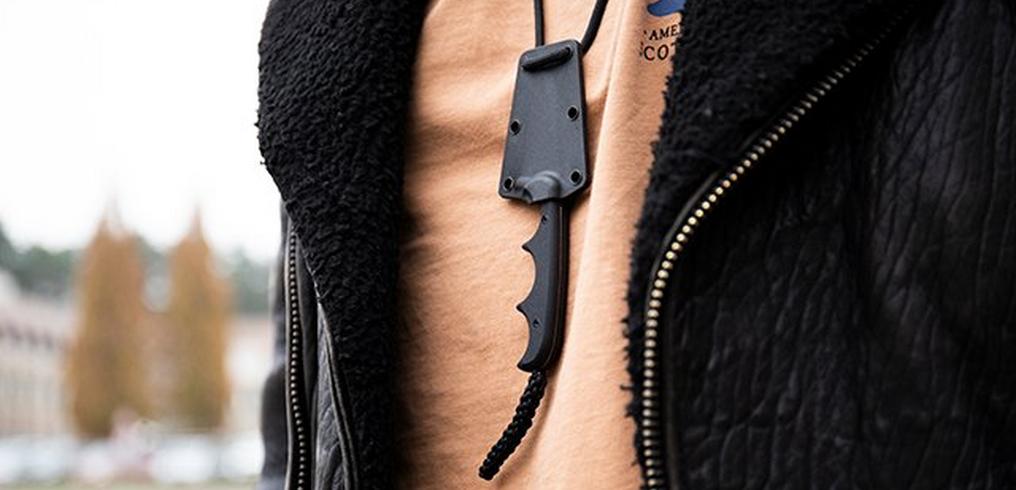Fällkniven Taiga Forester review by Padraig Croke
For those of you who have been following my reviews here for Knivesandtools, you may remember my 2019 extensive write up on the S1X, from Fällkniven’s new X series that had just come out. After testing and a lot of punishment through some survival courses and heavy use, I came around to the fact that the S1X was probably one of the finest survival knives I had ever had the pleasure of using. Fast-forward to 2020 and Fällkniven’s release of the Taiga Hunter and Taiga Forester knives has shown that this company still has some tricks up their sleeve. I was so impressed with the S1X in 2019... but have they managed to do it again?
Previous Fällkniven Experience
For all intents and purposes, the specs and materials used in the TF1 are absolutely top end. The steel is 12cm of cobalt alloy (CoS) hand-ground with a convex edge and finished with a satin sheen. At 5mm thick, this blade is every bit a contender to the build I experienced with the S1X... complete with that beautiful high convex edge and a distal tapering at the tip, giving you access to a pinpoint working tip for intricate work. I have always loved the grind on Fällknivens, and that distal taper is something I have yet to see being done better on any other knife.
Aside from the tungsten coating on the S1X, the specs are remarkably similar, give or take half a cm here and there. Similarly, the sheath is almost identical, using their tried and tested Zytel double locking system, your knife is not going anywhere! Zytel is a very hard and impact-resistant fiberglass reinforced nylon and is among one of the best you can use in a sheath. The material is strong and stiff, resistant to abrasion, does not conduct electricity and can withstand virtually all conceivable chemicals and solvents. Let’s look at some of the unique selling aspects of the Taiga Forester.
Falling between the cracks
It is an accepted fact that Fällkniven knows how to make a survival knife. The Fällkniven model F1 has been the official survival knife for pilots in the Swedish Air Force since 1995, and their models F1 and S1 are approved for U.S. Navy and U.S. Marine air crews. Their no compromise approach to material choices, intensive independent break tests and their years of experience collaborating with armed forces means there is no denying the chops of Fällkniven. However they are not without their issues. Fällkniven can be a little bit of a love/hate company for people. Some people absolutely swear by them and will use nothing else. Other people dislike their knives due to thin, uncomfortable scales… or find their choices of steel overly complicated when it comes to maintenance and sharpening. To be fair I can see their point at times. As much as I love Fällkniven, I will admit that sometimes I feel their knives are overly designed, to their own detriment.
Let’s talk about their Zytel locking sheath system. I have always appreciated these sheaths for their functionality. The material is almost unbreakable and the locking system on the side, as stated above, essentially double locks your blade with extra security. The reason for this on a survival blade is so you can choose what kind of orientation you wish to carry your blade. Perhaps on a backpack strap, upside-down… or horizontal on the back of your belt. The Fällkniven sheath is super secure and super versatile, perfect for soldiers and armed forces. It is designed within an inch of its existence, and favours function over form, leaving you with a highly usable, but slightly ugly sheath. So with that in mind, and looking at what they were going for aesthetically speaking with this Taiga Forester, I have to ask. What's wrong with a simple leather sheath? While Zytel is perfect for Fällknivens survival knives, on the TF1 it simply feels like an afterthought. The scales are crafted from beautiful desert ironwood, inlaid with the polished brass crowns of the Swedish flag. This to me, is a knife you present to someone as a gift. It feels like an expensive watch in all its beautifully polished glory. Something that could just as easily belong in a display case as on your belt. I imagine it would make a nice retirement gift. It’s price tag warrants it and the materials chosen, to me, indicate that Fällkniven wanted this blade to feel like a premium tool. A dress knife, not a beater.
But there is no beautiful leather sheath, or a presentation box, just an ugly plastic sheath (at least that’s how it looks) that could reasonably be found on any hardware store knife. Whatsmore, the blade actually rattles in the sheath, so even in terms of functionality it’s falling short. If I were using this as my hunting blade (which I probably wouldn't anyway, but we will get to that) then I would definitely not want my knife rattling around in a plastic sheath on my side. Speaking from both an aesthetics and functionality point of view, this sheath is too smart for its own good. A simple leather sheath would have served its purpose more simply, and actually more effectively.
Another element of this blade I have an issue with is the handle shape, and the polished finish on the ironwood. Upon my first handling of the TF1 I was impressed with the handle shape. It’s deep finger choil behind the working edge, and the thickness of the wood was better than I had experienced with any Fällkniven I’ve had the pleasure of using. The corners are delicately sanded and smoothed offering a pleasant weight in your hand. However, after a while it became clear to me that the scales were still a little too squared off. Used in a simple full grip, my hand got sore and a little tired after only a few minutes, and evidence of hotspots were making themselves evident, particularly on the fleshy part of my palm when performing push strokes and making feathersticks. I will say that chest leaver cuts are very comfortable due to the gentle sloping at the butt end of the scales. It rolls easily along your chest due to this. However, the overall uncomfortability of this blade makes me wonder if this was a feature, or simply a glitch. The TF1 is described as a hunting and all round outdoors knife designed for the demanding user. I wonder what elements of this blade have been designed for it to be considered a hunting knife. I imagine that the scales are polished to the point where skinning and processing an animal with this blade would make the handles bloody and slippy when working. But this is just speculation and I have not tested this theory. Also, there is a rubberized handle version of the TF1 that would be far more effective for this task, but I doubt the ironwood version would serve you well for this purpose.
With all this in mind, I must admit that the Taiga Forester to me feels like it doesn't quite know what it’s trying to be. The middle child of the family, who wants to be like his older brother and trying to wear his jacket, but is just a little too clumsy to pull it off convincingly. The TF1 simply falls between the cracks for me.
The Redeemer
From reading the above you may be thinking that I dislike this knife, or even hate it. But I promise you that this is not the case at all, quite the opposite in fact. I do really like this knife, I think it has simply been mislabeled and that Fällkniven have created something they didn't really know what to do with. This is pure speculation however, and if anyone feels like changing my mind on this, I would love to hear from them. This knife is confusing. It's a little uncomfortable, it’s a little too big, it’s a little too stiff in its uniform. So why do I still love it? Honestly I’m not quite sure why. It’s definitely not a bushcrafters knife or a hunters knife. So what is it?
I think the Fällkniven Taiga Forester is an aesthetically stunning blade. The desert ironwood is deeply textured, and the brass inlay offsets the deep browns perfectly. The satin finish on the steel and the complex grind and blade geometry will make it perfectly acceptable as a working blade. As stated above, in terms of specs on the blade, it's not a million miles from their survival blades. But the TF1 is for your dad's 60th birthday. It’s for your retiring boss or officer. It’s for your grandad, or your best friend's wedding. It’s a stunning blade. Not without its issues, but I would be proud to have this blade by my side in the right circumstances and it is by no means a bad blade. It’s simply wearing the wrong uniform.
Padraig Croke
Padraig Croke is the host of the outdoors podcast Trial by Fire, which ran from 2018-2023. A graphic designer and photographer by day, as well as an avid outdoorsman and bushcraft enthusiast, when he's not writing for us he's usually out in the field making film or taking photographs.

You can find his work at www.padraig.me or by following him on instagram @padraigcroke
Thanks, Padraig, for this awesome review!







?%24center=center&%24poi=poi&%24product-image%24=&fmt=auto&h=490&poi=%7B%24this.metadata.pointOfInterest.x%7D%2C%7B%24this.metadata.pointOfInterest.y%7D%2C%7B%24this.metadata.pointOfInterest.w%7D%2C%7B%24this.metadata.pointOfInterest.h%7D&scaleFit=%7B%28%24this.metadata.pointOfInterest%29%3F%24poi%3A%24center%7D&sm=c&w=1016)


?%24center=center&%24poi=poi&%24product-image%24=&fmt=auto&h=490&poi=%7B%24this.metadata.pointOfInterest.x%7D%2C%7B%24this.metadata.pointOfInterest.y%7D%2C%7B%24this.metadata.pointOfInterest.w%7D%2C%7B%24this.metadata.pointOfInterest.h%7D&scaleFit=%7B%28%24this.metadata.pointOfInterest%29%3F%24poi%3A%24center%7D&sm=c&w=1016)

